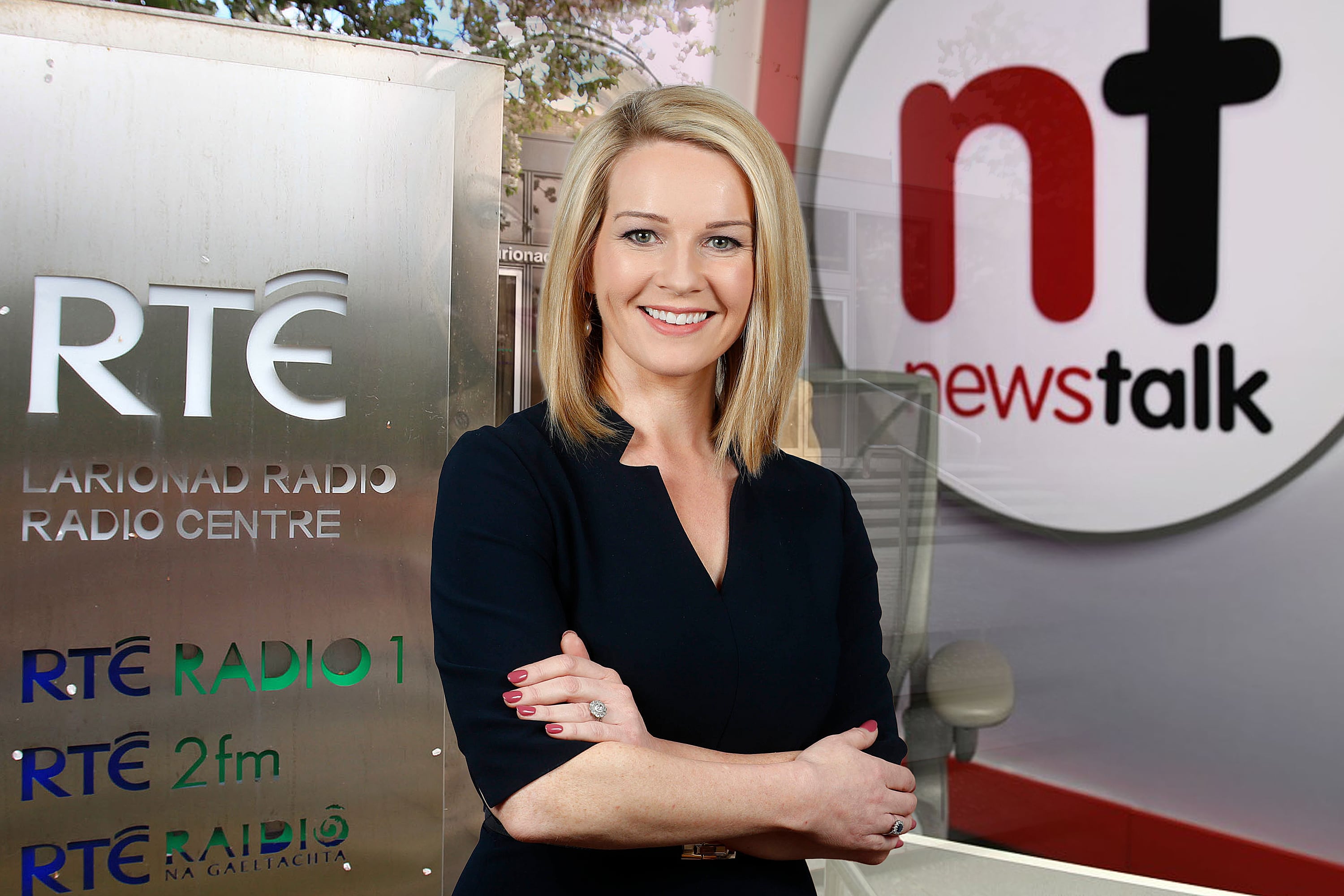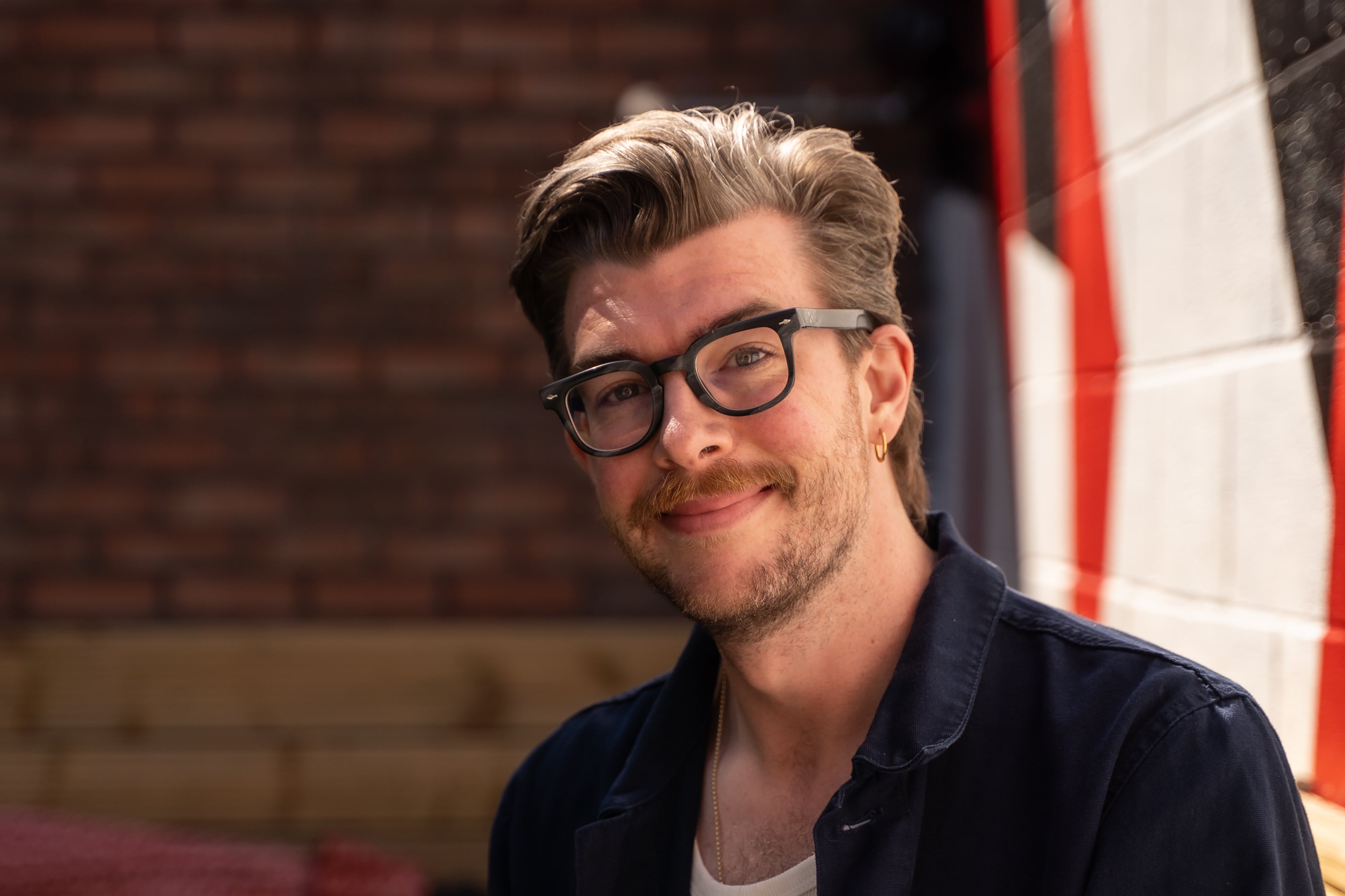It’s 7pm but still sunny. On the plaza by the water, lots of couples are dancing; intricate steps and twirls and turns and hip swivels and joy and bodies in sync, as rhythmical accordion music plays on a speaker. It feels tropical, a hot-country thing, this social dancing outdoors for pleasure. Could this really be Dublin?
Anyone wandering through Grand Canal Square on a Tuesday evening over the warmer months, near the Bord Gáis Energy Theatre, might come across this scene, informal gatherings to dance and socialise. The red lightsabers, the water of the basin, Anantara the Marker’s chessboard hotel, the Libeskind-designed theatre, all form a distinctive Dublin backdrop to an energising, joyful use of this public space. It looks gorgeous, and such fun. Stop and watch or ask about it, and you may be roped in: the basic steps are straightforward. These are Brazilians living here, and many others too, forró dancing outside for pleasure not performance, as well as a social scene where friendships are formed.
This is a sort of contemporary, cosmopolitan version of dancing at the crossroads, but in the city, and much sexier.
The outdoor social here has been going for a couple of years, is informal but loosely organised, with classes and social evenings. Helca O’Dwyer is from Salvador in Bahia, in northeast Brazil (where forró was born around 1930, popularised by singer-songwriter Luiz Gonzaga). She has lived in Ireland since January 2022; as a forró teacher, it’s been her turn to host responsibility for the outdoor social all summer.
RM Block
She loves dancing. “Dancing relaxes me, it’s therapy for me. Dance is the great love of my life. It changed my lifestyle, allowed me to meet people, get to know myself better, and that is therapeutic and healing. Dance taught me to respect other people’s space, to look at people with affection. It always puts a big smile on my face. I feel free dancing.”
The night before
“Bom-bom.” Pause. “Bom-bom.” Pause. “Bom-bom.” Pause. Helca O’Dwyer is enunciating the beat in the forró class. We start in a circle holding hands, doing the basic forró step, moving in and out. People break into twos and start to move. It gets swish pretty quick, but everyone is friendly, helpful and understanding of a klutzy newcomer.
This is one of a network of classes and other (indoor) social dancing through the week, especially here at Hill 16 pub on Gardiner Street. On Thursday nights there’s a brass band, and samba on Friday. This popular style of forró is called cabrueira, created by choreographer Edj Braga in Salvador. It’s a relatively recent variant, with different rhythms, lyrics and steps, more spins and arm movements. There are classes in Dublin for other forró styles too, such as roots, and university, the most popular and easiest to learn.
Here in the cabrueira class there’s a 1-2-3 step as the couple moves back and forth. A twirl backwards and in again, with a foot move, is the second step. It’s gentle and rhythmical and slowish (but can be faster), and the simple footwork of the basic steps gets more complex, with lot of twirling and passing, and an easeful sensuousness. It’s a pleasure to watch skilled dancers. One person leads, the other follows, and both men and women can do either.
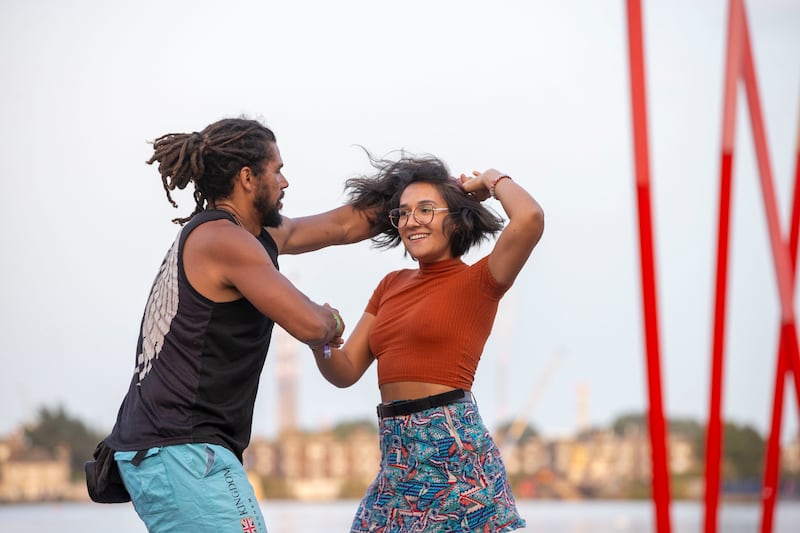
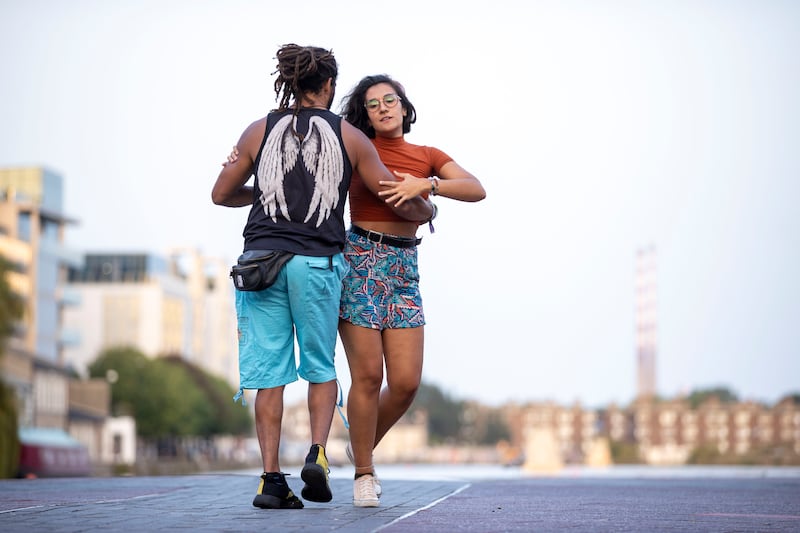
There’s a lot of fun. Tonight there’s a new step, a turn where the dance leader twirls their partner, who runs hands-down-body sensuously. Everyone laughs (in her swift turn raising her arm around to land on her partner’s shoulder, O’Dwyer nearly whacks him in the face).
Then there’s a sort of dance game, involving a touch and then a gesture. O’Dwyer is teaching in Portuguese but you can follow what’s going on by watching the moves. There’s a mix of nationalities. People are friendly. Marley Bizerra from São Paulo, who has been living in Ireland for eight years, tells me traditional forró lyrics are about people’s tough lives. After a practice you move on to the next person. I dance with Rodrigo Lusoli, Stevao Torres from Belo Horizonte, and many others, but I’m too busy trying to remember the steps to catch all their names.
What is forró anyway?
Forró (pronounced faw-haw) is the Brazilian music, and the dance style, and the social events too. (Going to the forró means “going to the party”, and forrobodó is a Brazilian term for a great party.)
Growing from its northeastern roots, both the music and the dance changed, influenced by new sounds and rhythms. Forró music is a mix of Afro-Brazilian (samba, baião) and polkas, and involves a large bass drum called a zabumba, as well as accordion and metal triangle. Forró dancing is related to swing, Samba de Gafieira (Brazilian ballroom) and Cuban or Columbian salsa.
At the Grand Canal, couples dance several styles of forró. It’s a very popular couple dance across Brazil, and is now very much international, with multiple European festivals. You hold your partner firmly, legs touching and entwined. The basic steps are simple, it is rhythmic and can be slow or fast, but even slow it’s full of energy. Though it’s social and not competitive, it can be quite flamboyant and sensual. No wonder it fills dance floors – and outdoor squares.
A reminder of Brazil
O’Dwyer talks about how demonstrative Brazilians are. “The dancers hug a lot, it’s normal. Brazilian men are good dancers because Brazilians aren’t shy. They are not afraid, they just go.”
She is a veterinarian (surgeon, anaesthetist and oncologist) but her English isn’t good enough to practice here yet, she says; in the meantime, she works in healthcare.
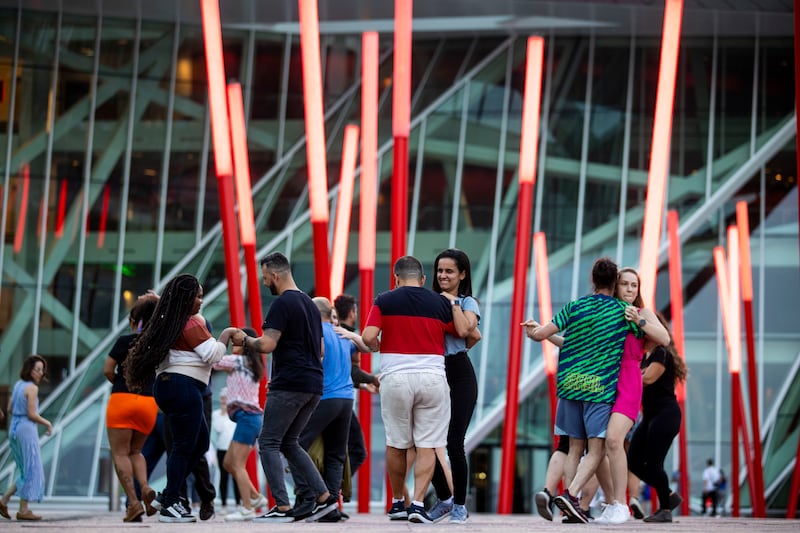
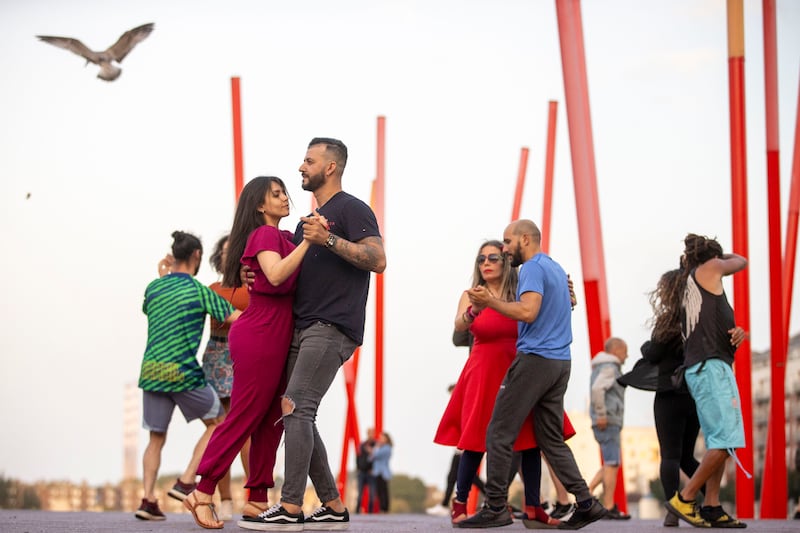
In Brazil she danced stiletto and afrodance too, and taught for three years, mainly women. “It’s more exciting when you teach women because you can give more sexuality.” She gesticulates: hands and hair. “Women are great dancers too. They have a different way, a smile, a look, a different swing that you only see in Brazil.” Teaching in Brazil she tried to dismantle socially-imposed modesty. “Sensuality in dance grows from the inside out, and it can range from a beautiful and sensual movement to just an intentional look. I love seeing this growth in women. It shows the power that already existed but was not used. It is empowering.”
She enjoys teaching women and men together here. “Dancing forró is a constant reminder of my roots, and it makes me stronger.”
Her second name O’Dwyer is, as it sounds, Irish. Her great-grandfather emigrated from Tipperary to South America in 1920, settling in the Rio de Janeiro region. She moved to Ireland to find out more about her roots, which she is doing “step-by-step”; she started a family tree at the Epic emigration museum, and is looking for more family information.
Waterside dancing
When the weather turns colder, the outdoor dancing will taper off but continue indoors. But for now the crowd is lively, with people changing dance partners, and some accomplished moves. As well as Brazilians – the community in Ireland is about 70,000 people – there are many other nationalities here at the forró by the Grand Canal basin, including Irish, Ukrainian, Romanian, Greek.
Jozi Loro Casali, from the south of Brazil, says this social is a typical scene. She loves to dance, and does jazz, contemporary, fandango, vanerão, chamamé. She learned forró in Brazil, which she left more than five years ago, but has practised more in Ireland. She’s lived in Ireland, Italy, South Africa and France, and returned to Ireland in October 2021. “Dance is my life. When my friends invite me to a party, I can’t dance there to electronic music.” She enjoys the clubs and socials with bands. Her social life is dancing forró and samba at weekends, part of a lively Brazilian culture here.
She’s an accountant, working here as a financial assistant, getting experience. “I’m trying to make here my home. Life in general is better, so many opportunities compared to Brazil, even with a good job there.” Ireland is also less socially segregated. “It’s better living here. You feel part of the city and the society.”
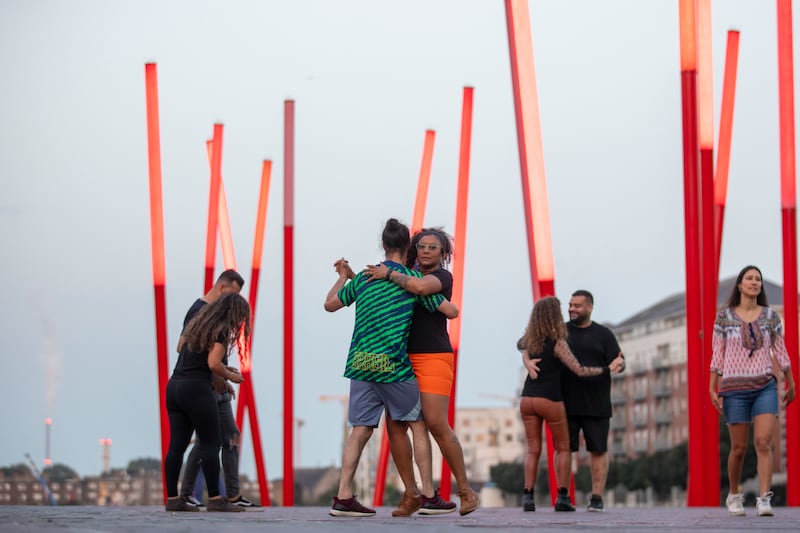
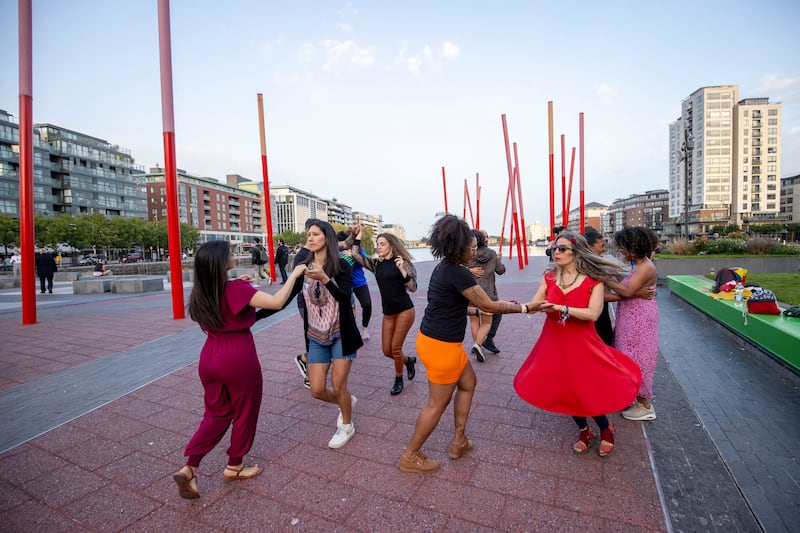
Nalaliia Onofreichuk from Ukraine has been in Dublin for a year, came across a forró class on International Dance Day (April 29th) and now goes to classes and socials regularly. She started dancing polka and a bit of tango in Ukraine two years before the war. Her 19- and 17-year-old children are in Ireland too, her eldest is in Canada and her parents in Ukraine. “Forró is an easy dance, not hard. One, two, three. Here is absolutely clear rhythm and you can’t make mistakes. The balance of the body works perfectly. The dance is not fast so the body moves very smoothly. For me it’s anti-stress. The brain stops, only the body makes action.”
Finn Ó hEithir, who’s Irish, has done lots of dance: Zouk, Samba de Gafieira, dabbled in Zumba. He looks likes he’s got it licked but says forró is “easier for Brazilians to pick up than Irish, I find. It took me a while. I thought it would take six weeks, I’d say it was closer to five years to get a good level.” Turns out he’s a veteran. “I have done all of it, for seven years. I’ve danced in the Mezz, Three Spirits [closed now; it’s now an office block], the Wool Shed, Madigans.” He jokes, “I’m committed to it now. It beats the alternatives, computer games or YouTube.”
Evaristo Santos Permambuco has only been here for four months. He learned forró in Brazil and dancing here is an opportunity to “meet people, enjoy relationships, have a good life”.
Mila Daros, an art teacher and video editor from rural central Brazil, moved to Ireland in March 2022. He dances on Tuesdays and Wednesdays. “I always like to dance. I love it, it’s fun, it reminds me of Brazil.”
Yasmine Moreira is a quantity surveyor from Bahia. Construction materials here are different from Brazil, she tells me. They use timber where we use more steel, and we need two leaves of external walls. “It’s a challenge, to learn something new.” Her challenges were learning English, then adapting to building work here and to the Irish accent. “Life is always a challenge.” Her latest challenge has been learning cabrueira. She talks about forró festivals around Europe, which she or O’Dwyer have visited or plan on: Lisbon, Nice, Italy, France.
“I like dancing, I like empty time, because you don’t think of your life or problems, you’re just dancing. I feel better every time I come. I never regret coming. You think just about the steps you need to make. You don’t think of life, because life is heavy.”
Helca O’Dwyer posts regularly on Instagram on where you can dance forró. @hkodwyer


